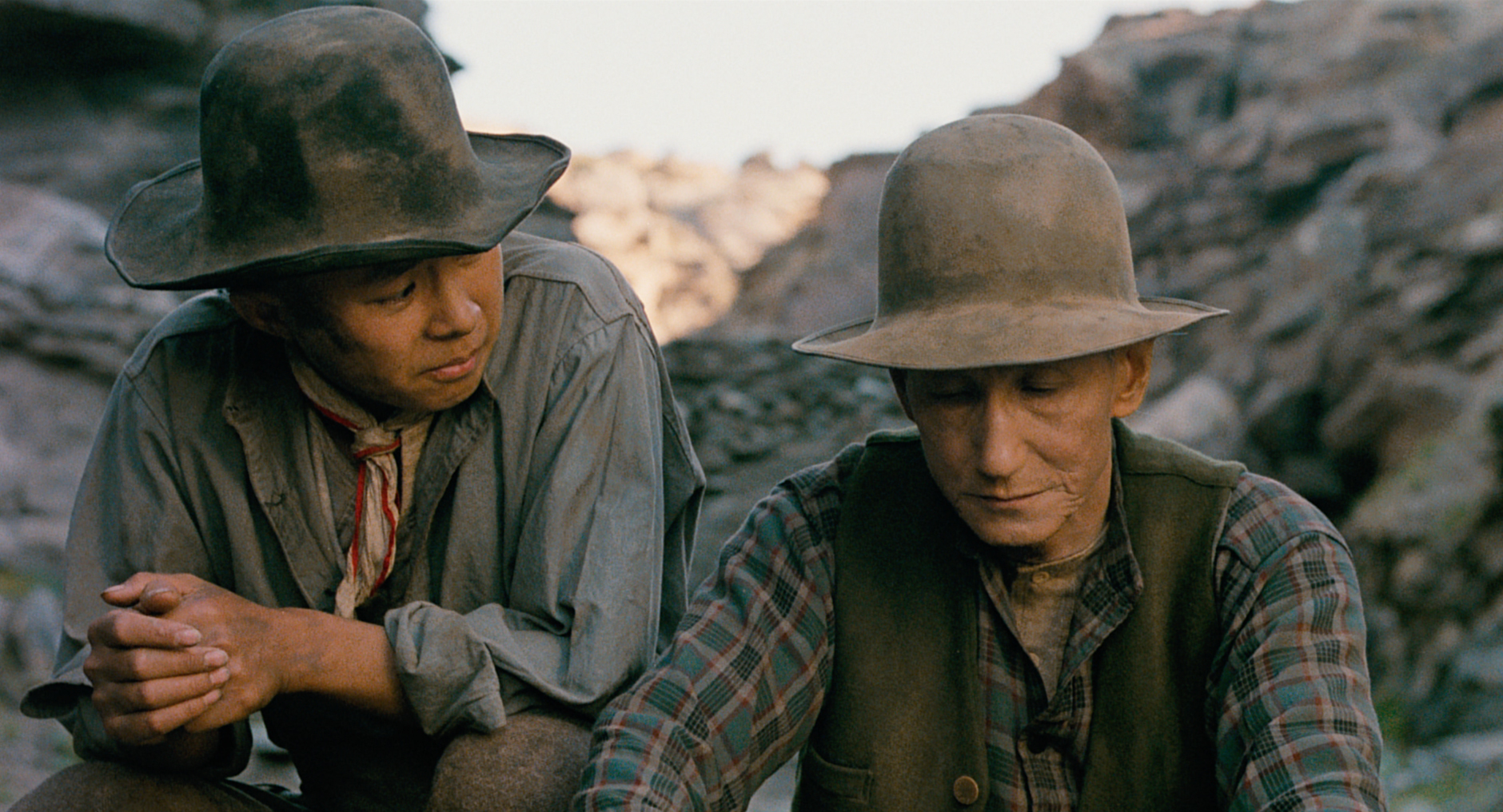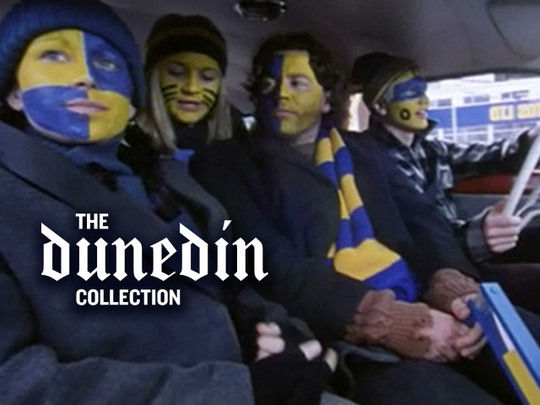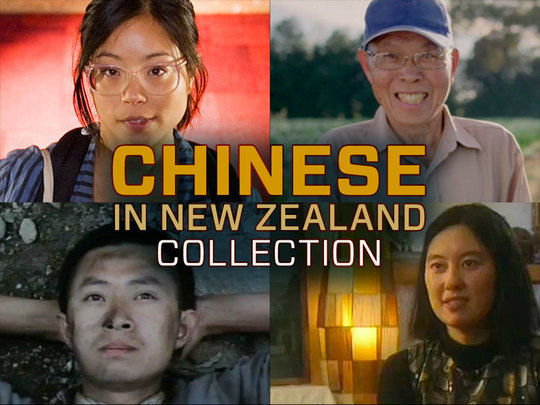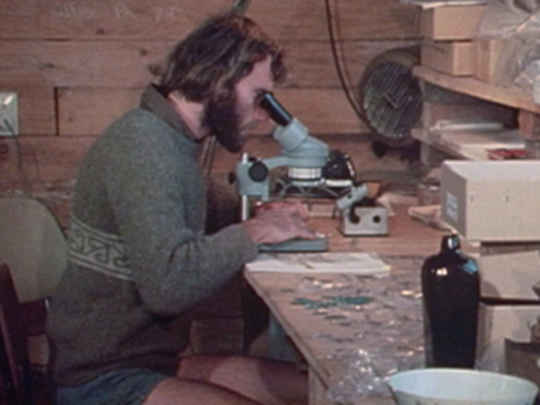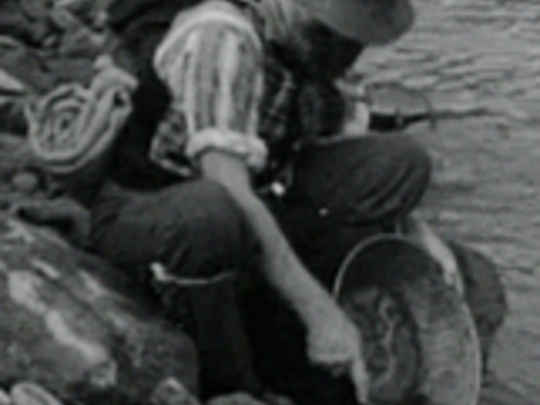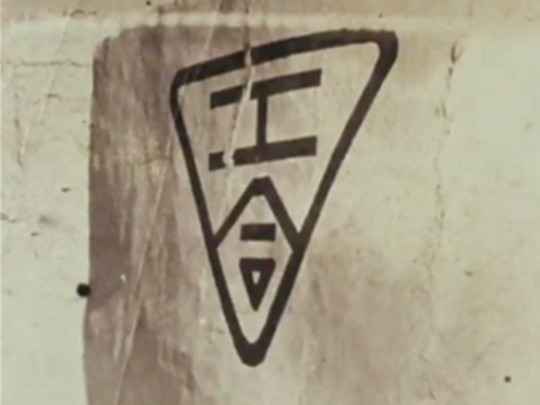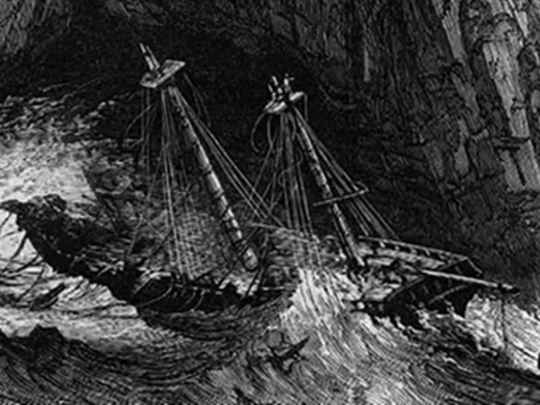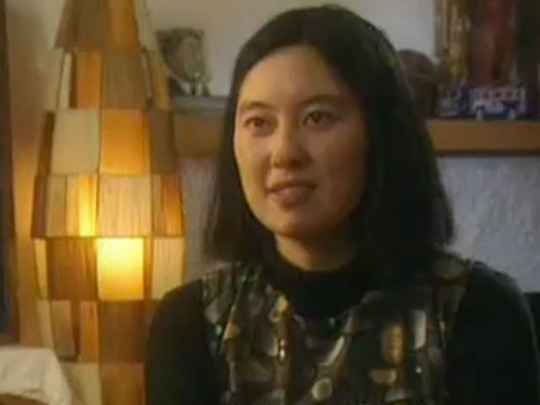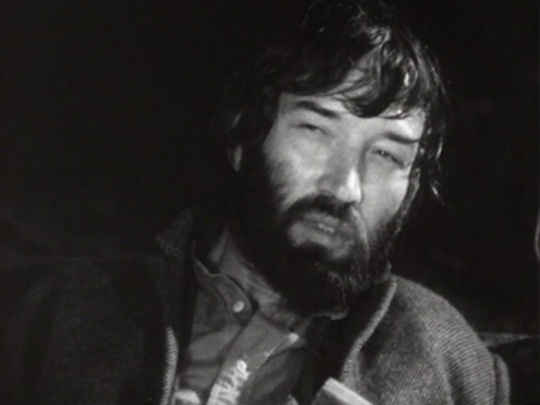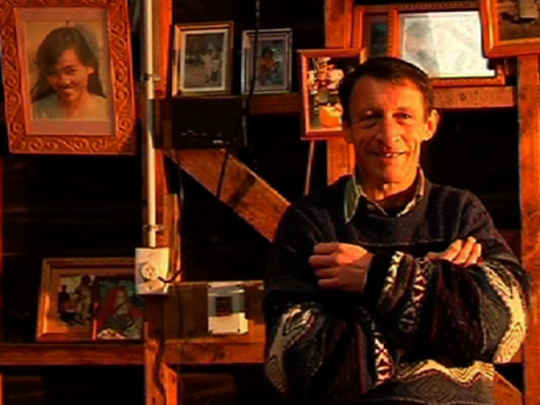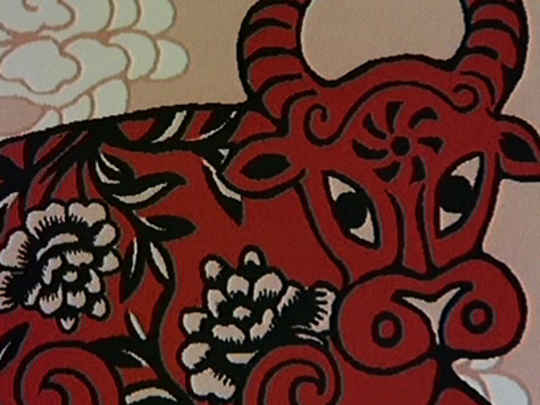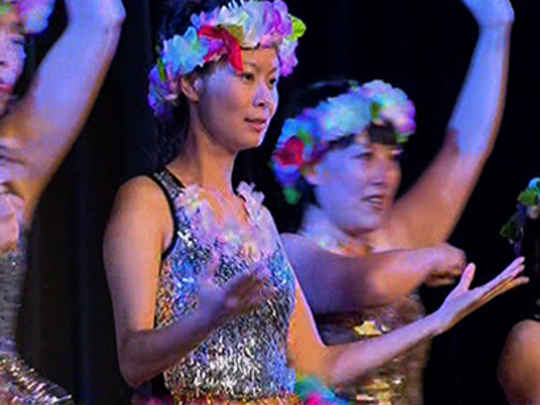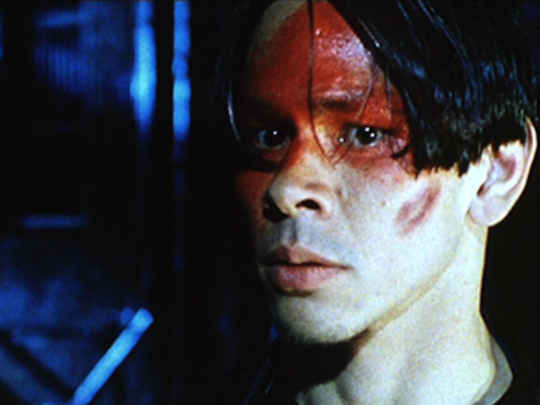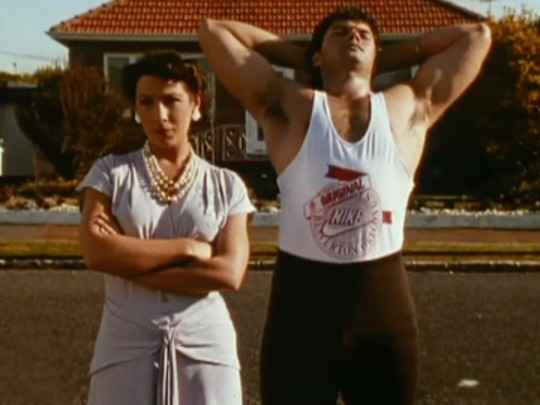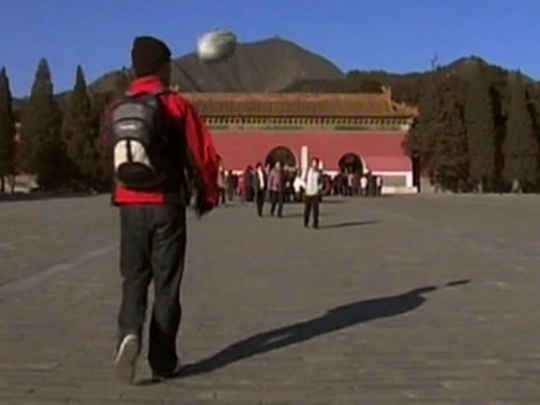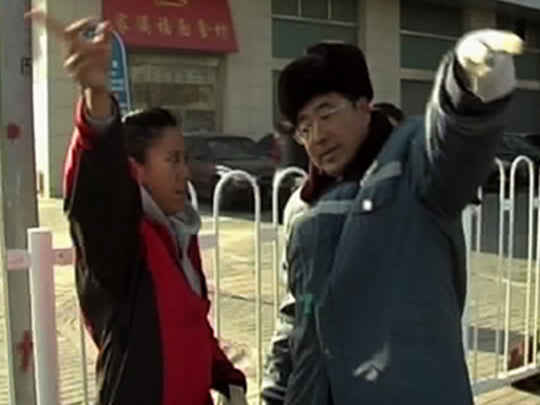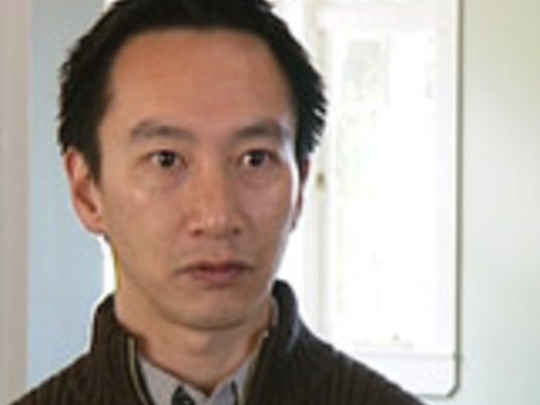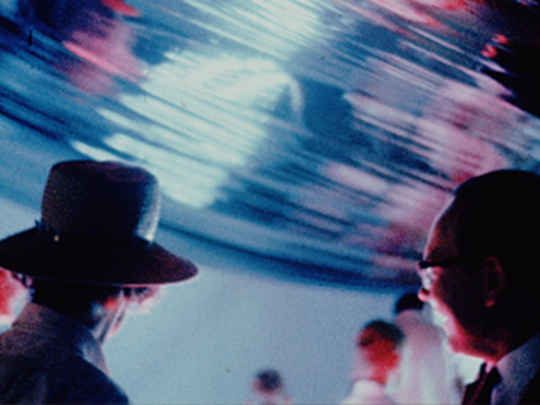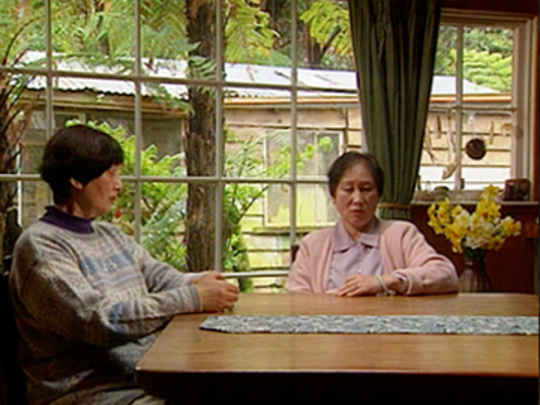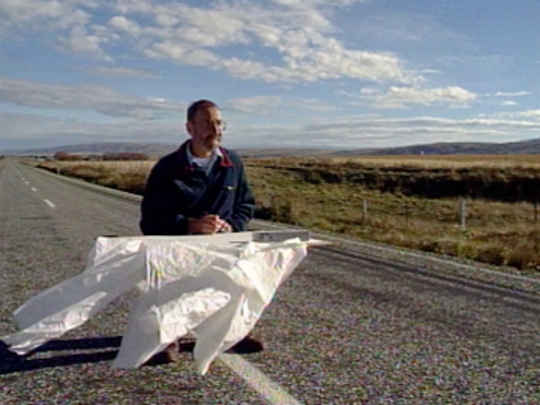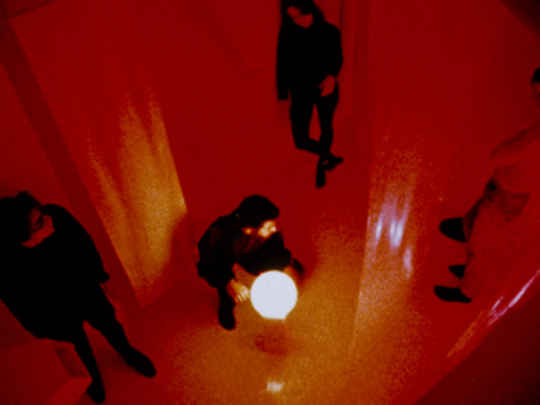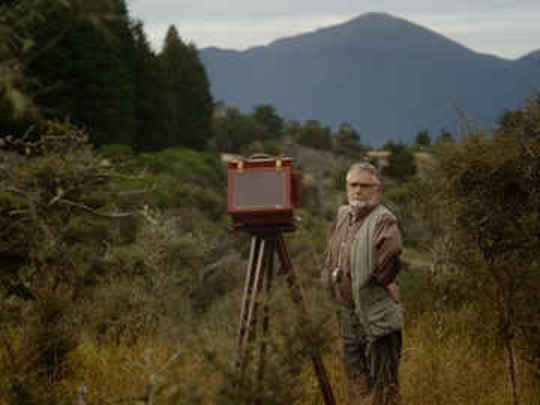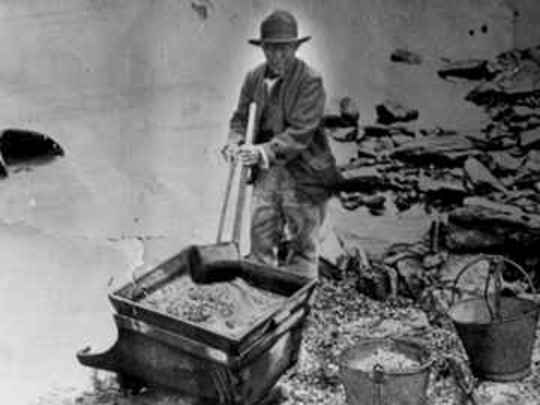Illustrious Energy
Film (Excerpts) – 1988
A perspective
One of the most evocative — and unlucky — Kiwi films to emerge in the 80s was born from a couple of paragraphs in a book about Chinese goldminers. Illustrious Energy, the result, is the only movie (to date) to explore the many Chinese who arrived in New Zealand in the 1800s.
When cinematographer Leon Narbey was casting around for a project to direct, novice scriptwriter Martin Edmond mentioned Peter Butler’s Opium and Gold. The book was a history of Chinese miners in New Zealand. One short section in particular had caught Edmond’s eye: it mentioned a Chinese poet called Illustrious Energy (or Illustrious Envoy, as it turned out) who wore clothes made of white flour bags, and was incarcerated in Seacliff asylum.
Narbey had long been fascinated with China. While shooting two documentaries there, the isolated, semi-desert locales of the Silk Road area had reminded him of Central Otago.
This was where many Chinese miners lived after being invited by Otago authorities in the 1860s to work mines abandoned by Anglo-settlers. It was an attempt by civic leaders to re-boot the southern economy after the gold rush boom was on the wane. In 1881, a racist poll tax aimed specifically at Chinese was introduced. It stayed in place for another six decades, and effectively prevented the (almost entirely male) Chinese population from bringing their families to New Zealand and settling here.
After six or seven drafts developing a story based on that context, and at least three funding knockbacks — partly Narbey suspects, because they were non-Chinese — Edmond and Narbey’s project gradually morphed from a half-hour docu-drama for television, into their first feature together.
Along the way the main character of Chan grew younger, and an older character was added to the plotline. Both miners long to be home, after years prospecting for gold from a stone hut in Central Otago. Though Narbey and Edmond knew their story could never sum up the enormity of the Chinese experience on the goldfields, accuracy was a keynote.
Archaeologists were rushing to excavate Chinese historic sites, before the new Clyde Dam put them underwater. The scriptwriters too were “trying to recover a lost world”. As Edmond told Illusions in 2008: “It was important not to invent things but base every detail, where possible, on documented fact.” Many images in the film — including the old man carrying sticks on his back, the opium den, and the circus — were inspired by the photographs and notebooks of missionary Alexander Don (played on screen by Peter Hayden), who spent more than a decade serving on the goldfields.
Narbey and Edmond were also hoping for another kind of truth. Illustrious Energy tells its tale largely through images of man and landscape, earth and sky. Recalling the Chinese poet who first inspired the project, Narbey and Edmond read Chinese poetry, and were impressed by how much it achieved, despite being so concise. As Edmond put it: “We wanted the film to look and sound like a T’ang dynasty poem.”
Delays in getting the film going ultimately proved beneficial, giving production designer Janelle Aston time to ready the main location, an old miner’s hut near Alexandra — and clear 15 acres of eight-foot tall rose bushes.
Casting meant stress, and serendipity. Shaun Bao (aka Bao Xun), already a veteran of 15 Chinese features, happened to be in Christchurch learning English. He was the first to audition for the main role of Chan. Plans for Chen Shu (The Last Emperor) to join him as his father-in-law collapsed a week before filming began, when recent cases of high profile asylum-seekers resulted in a temporary halt on exit visas from China.
Co-producer Chris Hampson rushed to Hong Kong, and found Harry Ip (aka Ha-lei Yip). The challenges of finding actors who could communicate in one language or dialect spelt the end of hopes that 40 per cent of the film’s dialogue be delivered in one consistent form of Chinese. Sean Bao spoke Mandarin, Ip Hong Kong Cantonese, while future Dunedin mayor Peter Chin spoke Sze Yip dialect — “so they all had to speak English to communicate anyway”.
Illustrious Energy won eight Listener Film and TV Awards, and a prize at an Italian festival devoted to new directors and innovative Third World cinema. At home, The Listener’s Douglas Jenkin praised the “sensitive” screenplay, calling it “ the most assured and sophisticated of recent New Zealand films”. North and South’s Brian McDonnell found it “faultless as a work of art” (20 years after its release, Illusions magazine would mark the film’s importance with a special 22 page section).
The problem — then and now — has been watching it. When production company Mirage went bust in June 1988, Illustrious Energy was one of eight Mirage titles seized by receivers, and sold to a company in Los Angeles. Over the next few years the film was retitled Dreams of Home, sold again, and the master negative misplaced. Since then copies of the film have been of questionable quality, and as rare as precious metal.
Finally the negative was tracked to a West London laboratory. With help from Park Road Post, Illustrious Energy was restored in time for screenings at the 2011 Wellington and Dunedin Film Festivals. For this once lost, one-of-a-kind classic, a DVD release is soon expected to follow.
Sources include
‘Brenda Allen, ‘Identity and Cultural Salience in Illustrious Energy’ - Illusions 40, July 2008, Page 9
Russell Campbell, 'Microcosm/Macrocosm - An Interview with Leon Narbey’ - Illusions 8, June 1988, Page 2
Douglas Jenkin, Review of Illustrious Energy - NZ Listener, 21 August 1989
Brian McDonnell, Review of Illustrious Energy - North and South, 1988
Duncan Petrie, ‘“The rhythm of the process...” - An Interview with Leon Narbey’ - Illusions 40, July 2008, Page 4
Laurence Simmons, ‘ “That rare thing, a film that is also a work of art’’ - Laurence Simmons interviews Martin Edmond’ - Illusions 40, July 2008, Page 21
‘Illustrious Energy Remastered’ (Press Release). Park Road Post website. Loaded 18 July 2011. Accessed 29 July 2011
